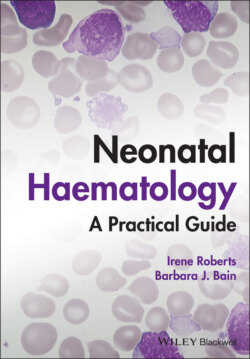Читать книгу Neonatal Haematology - Barbara J. Bain, Irene Roberts - Страница 32
Lymphocytes
ОглавлениеThere are few studies of lymphopoiesis in the human fetus. Although B lymphocytes are found in low numbers in fetal liver and fetal blood by 8 weeks’ gestation110 and gradually increase in number during the second trimester,111 the bone marrow is the main site of B lymphopoiesis in fetal life.8 By the second trimester, both fetal liver and fetal bone marrow B cells are polyclonal with equally diversified IgH chain repertoires, although at this stage the main source of IgM natural immunity seems to reside in the fetal liver as the majority of bone marrow B cells are still immature.112 Two types of fetal B cell have been described in mice (B1 and B2 cells), with B1 cells being specific to fetal life and hypothesised to mainly play a role in innate immunity as they have limited Ig production capacity.113 Putative B1 B cells have also been described in human fetal liver and bone marrow and in cord blood,114 but their developmental origin and function are still to be defined.
T cell progenitors are first detected in the thymus at 9 weeks post‐conception and mature T cells by 12–13 weeks post‐conception followed by T cells appearing in the spleen and lymph nodes by 24 weeks.115 Regulatory T cells, which are critical for promoting self‐tolerance in fetal life, are detected in the thymus at 12 weeks post‐conception.116,117 T lymphocytes are detectable in fetal blood, marrow and thymus during the second trimester118 and T cell development is largely complete by birth.119 By term, T lymphocytes form 40–45% of circulating mononuclear cells, with a CD4:CD8 ratio of around 5:1, slightly higher than that in adult blood (3.1:1). The normal ranges for the total lymphocyte count in neonatal blood are the same in term and preterm neonates (see Table 1.2) and remain stable over the first month of life in healthy neonates.67
